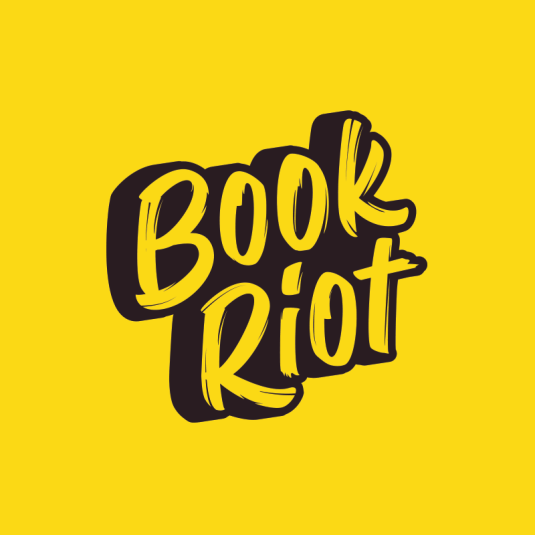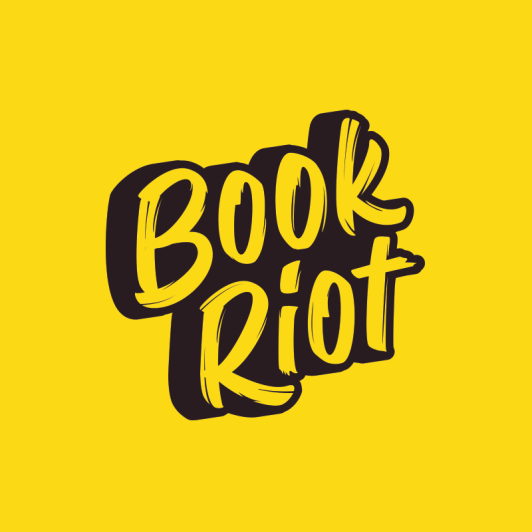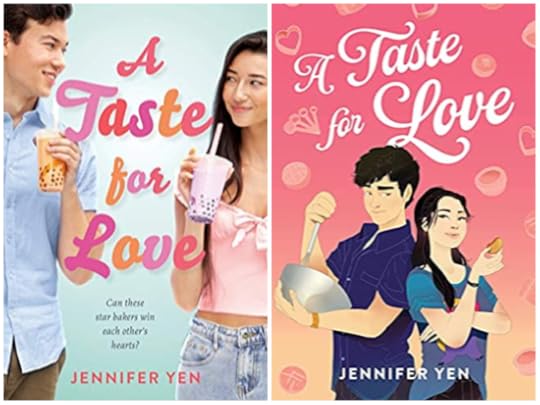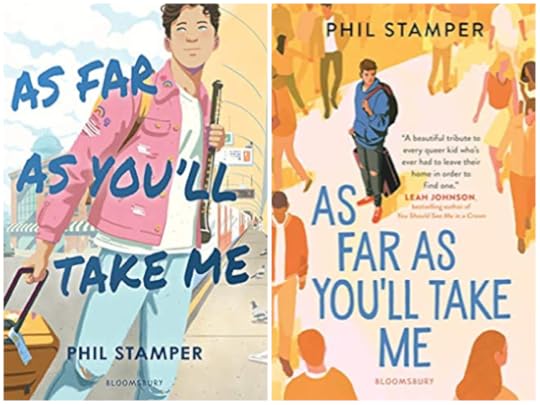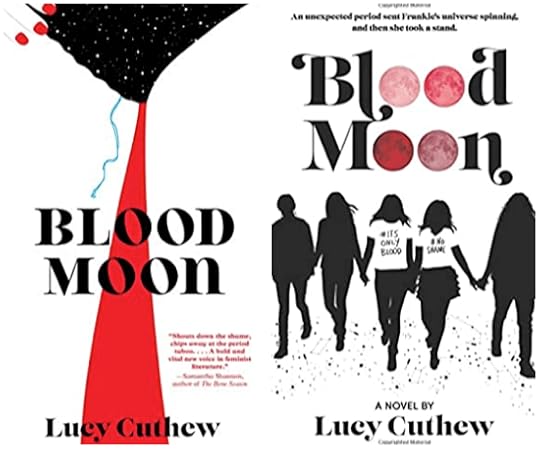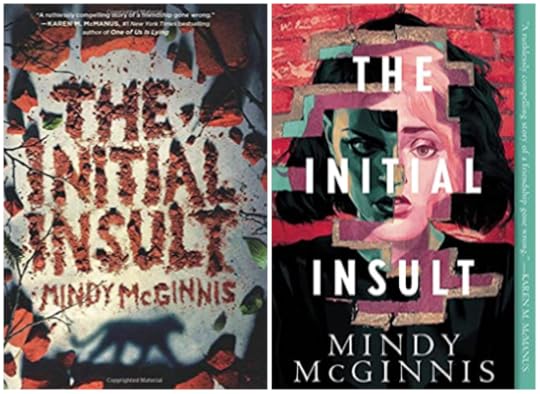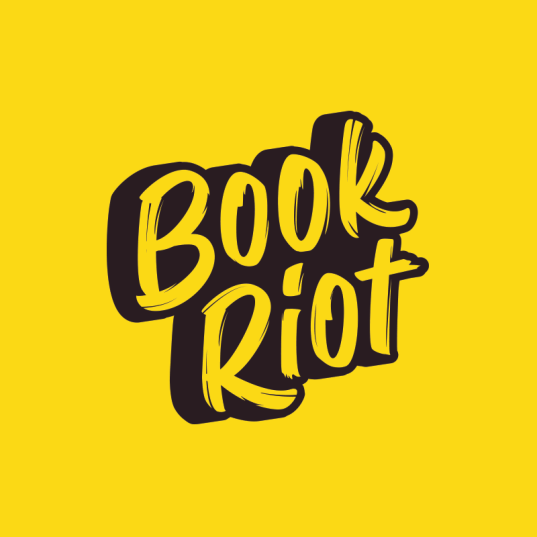Kelly Jensen's Blog, page 3
January 20, 2022
This Week at Book Riot
Over on Book Riot this week…
The High Plains Library District in Colorado created a new programming policy that opens the door to censorship. A librarian whistleblower was fired for highlighting it.
New board books for the first half of 2022.
A host of beautiful metal bookmarks.
Last week’s roundup of censorship news offers up the week’s challenges, as well as a look at why these challenges are happening. It’s all part of the takedown of public education in America. You just have to follow the money.
January 18, 2022
Happy 2022!
Hi everyone! I’m still here, mostly. I’ve fallen out of the habit of writing regularly (both here and elsewhere), and this post is my attempt to to get back into the swing of things.
A lot has been going on with me while I’ve been gone. The biggest thing is that I am going to have a baby this spring! My initial absence from the blog was in part because I was feeling pretty terrible all day, every day, and it was hard to motivate myself to do much of anything. But I’m well into the second trimester now and feeling much better, though as the baby grows I expect new difficulties will arise. I want to take advantage of this time when I’m feeling pretty good and I’m not yet preoccupied with a newborn to get back into blogging, at least for a bit.
We live in a fairly small house, which means to make room for the baby and all its accoutrements, we’ve got to do some serious culling of stuff. This meant consolidating some bookshelves, which in turn meant getting rid of a lot of books. This wasn’t as painful as I thought it would be. I honestly couldn’t tell you more than five titles that I actually remember deciding to cull – these were mostly books that I’d had for years and finally decided I was never going to read, or books I had already read but didn’t actually care for that much.
Of course, part of the reason we got rid of so many of our own books was to make room for books for the baby! We have a nice little collection going so far consisting of books from our childhoods plus some gifts from family. I also picked out some favorite board books to give to family “from” the baby for Christmas so they’d have something to read with the little one when he visits them. It was a ton of fun choosing books that I hoped our relatives would enjoy reading to the baby – a music and dance themed one for the musician, a baking themed one for the hobbyist baker, a grandpa one for the first-time grandpa, and so on. (I noticed that most grandma-specific board books are pretty regressive, focusing a lot on gendered activities like cooking, sewing, shopping, etc. If they weren’t about stereotypically feminine activities, they were super generic about how much grandma loves the grandkid, which is nice but also a bit boring. Writers for board books about grandmas, please step up your game.)
In other book news, I’m super happy that I was able to participate in Cybils again this year. I’m on the second round of judges for the YA speculative fiction category, and we’re deep into reading the seven finalists before we choose and announce a winner on February 14. I can’t talk about my thoughts on any of the titles specifically until then, but I can say generically that this is a great crop of finalists and I’ve really enjoyed diving into them. It’s also been great to *have to* read some books in print (as opposed to audio, which has been my standby for the past several months), simply because they’re not available in another format. My attention span for anything but work or baby preparation has really suffered recently, so forcing myself to focus on reading, and only on reading, for an hour or so at a time has been really nice.
I’m excited to share some of the bookish parts of raising a child with you here. Thanks for sticking with us through all these years and all these changes in the blog and our own lives. I hope you have a happy start to 2022, and that you and your families stay safe and healthy.
January 16, 2022
Early 2022 YA Nonfiction Books
Nonfiction for young readers — that 10-18 range, which spans both middle grade readers and teen readers — always seems to be one of the categories that doesn’t land on a whole lot of lists. I suspect part of it has to do with the fact these books are still not as widely publicized or reviewed as their fictional counterparts, part of it has to do with the fact it’s a bit of a strange age-range, part of it has to do with the stigma around nonfiction for young readers being “report books” still, and part of it has to do with the fact that many YA-centric reviews/blogs/publicity avenues ultimately cater to the adult reader of YA, as opposed to the young reader. Again, not a slight.
Young readers are the target market of nonfiction for young readers. How the word about these books spreads is just different.
One of the things that makes this category of books so special and has for the better part of the last decade is that they’re inclusive. They showcase a wide range of stories, of insights, and of perspectives.
This isn’t a comprehensive list because finding publishers of YA nonfiction isn’t easy and few lists exist that compile large numbers of titles (this might be one of the only!). I have done my best to include as many as I could find, and I welcome folks to drop other titles they know about in the comments.
It’s also challenging to differentiate between books which are meant to help students with research projects — aka, reference books — and those meant to be more leisure reading without looking at them first hand. That doesn’t mean these two types of nonfiction are at odds but rather, it’s something that makes highlighting narrative nonfiction a little trickier. You’ll see below I have included the kind of leisure reading that encourages creativity and trying out new skills, without being tied to research/school-style assignments.
Children’s nonfiction writer Melissa Stewart has a tremendous resource on the five types of nonfiction I highly recommend reading if this is a category that interests you. I don’t include what she calls active nonfiction, nor do I tend to include tie-ins to franchises, fan service materials, and similar nonfiction that’s highly browsable. Last year, I put together a guide to some of the titles within these five types of nonfiction for young adults for Book Riot, so if you want to dive even deeper, you can.
All descriptions are from Goodreads, as are publication dates. Especially with the pandemic and printer challenges, publication dates can shift and change. Note, too, that these books cover a slightly different age range that typical YA books. Some will skew a little younger and encompass middle grade readers.
Early 2022 YA Nonfiction Book Releases
January
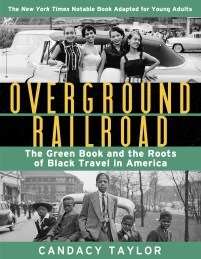 The Overground Railroad by Candacy Taylor
The Overground Railroad by Candacy TaylorOverground Railroad chronicles the history of the Green Book, which was published from 1936 to 1966 and was the “Black travel guide to America.” For years, it was dangerous for African Americans to travel in the United States. Because of segregation, Black travelers couldn’t eat, sleep, or even get gas at most white-owned businesses.
The Green Book listed hotels, restaurants, department stores, gas stations, recreational destinations, and other businesses that were safe for Black travelers. It was a resourceful and innovative solution to a horrific problem. It took courage to be listed in the Green Book, and the stories from those who took a stand against racial segregation are recorded and celebrated.
This young reader’s edition of Candacy Taylor’s critically acclaimed adult book Overground Railroad includes her own photographs of Green Book sites, as well as archival photographs and interviews with people who owned and used these facilities. The book also includes an author’s note, endnotes, bibliography, timeline, and index.
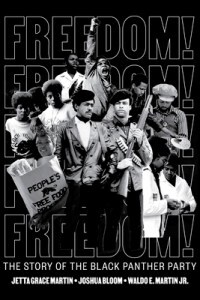 Freedom! The Story of the Black Panther Party by Jetta Grace Martin, Joshua Bloom, Waldo E. Martin Jr.
Freedom! The Story of the Black Panther Party by Jetta Grace Martin, Joshua Bloom, Waldo E. Martin Jr.There is a saying: knowledge is power. The secret is this. Knowledge, applied at the right time and place, is more than power. It’s magic.
That’s what the Black Panther Party did. They called up this magic and launched a revolution.
In the beginning, it was a story like any other. It could have been yours and it could have been mine. But once it got going, it became more than any one person could have imagined.
This is the story of Huey and Bobby. Eldridge and Kathleen. Elaine and Fred and Ericka.
The committed party members. Their supporters and allies. The Free Breakfast Program and the Ten Point Program. It’s about Black nationalism, Black radicalism, about Black people in America.
From the authors of the acclaimed book, Black Against Empire: The History and Politics of the Black Panther Party, and introducing new talent Jetta Grace Martin, comes the story of the Panthers for younger readers—meticulously researched, thrillingly told, and filled with incredible photographs throughout. Freedom! The Story of the Black Panther Party.
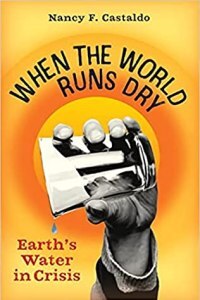 When The Water Runs Dry by Nancy F. Castaldo
When The Water Runs Dry by Nancy F. CastaldoWhat would you do if you turned on the faucet one day and nothing happened? What if you learned the water in your home was harmful to drink? Water is essential for life on this planet, but not every community has the safe, clean water it needs. In When the World Runs Dry, award-winning science writer Nancy Castaldo takes readers from Flint, Michigan, and Newark, New Jersey, to Iran and Cape Town, South Africa, to explore the various ways in which water around the world is in danger, why we must act now, and why you’re never too young to make a difference.
Topics include: Lead and water infrastructure problems, pollution, fracking contamination, harmful algal blooms, water supply issues, rising sea levels, and potential solutions.
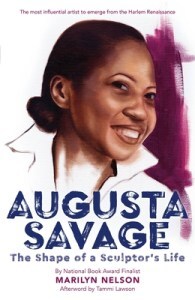 Augusta Savage by Marilyn Nelson
Augusta Savage by Marilyn NelsonAugusta Savage was arguably the most influential American artist of the 1930s. A gifted sculptor, Savage was commissioned to create a portrait bust of W.E.B. Du Bois for the New York Public Library. She flourished during the Harlem Renaissance, and became a teacher to an entire generation of African American artists, including Jacob Lawrence, and would go on to be nationally recognized as one of the featured artists at the 1939 World’s Fair. She was the first-ever recorded Black gallerist. After being denied an artists’ fellowship abroad on the basis of race, Augusta Savage worked to advance equal rights in the arts. And yet popular history has forgotten her name. Deftly written and brimming with photographs of Savage’s stunning sculpture, this is an important portrait of an exceptional artists who, despite the limitations she faced, was compelled to forge a life through art and creativity.
February
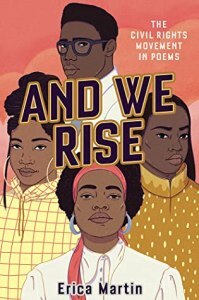 And We Rise by Erica Martin
And We Rise by Erica MartinIn stunning verse and vivid use of white space, Erica Martin’s debut poetry collection walks readers through the Civil Rights Movement—from the well-documented events that shaped the nation’s treatment of Black people, beginning with the “Separate but Equal” ruling—and introduces lesser-known figures and moments that were just as crucial to the Movement and our nation’s centuries-long fight for justice and equality.
A poignant, powerful, all-too-timely collection that is both a vital history lesson and much-needed conversation starter in our modern world. Complete with historical photographs, author’s note, chronology of events, research, and sources.
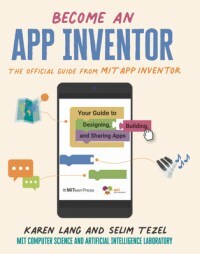 Become an App Inventor by Karen Lang
Become an App Inventor by Karen LangHave you ever wanted to build your own mobile apps? App Inventor, a free and revolutionary online program from MIT, lets you do just that. With the help of this companion guide chock-full of colorful graphics and easy-to-follow instructions, readers can learn how to create six different apps, including a working piano, a maze game, and even their own chat app to communicate with friends–then use what they’ve learned to build apps of their own imagination. User-friendly code blocks that snap together allow even beginners to quickly create working apps. Readers will also learn about young inventors already using their own apps to make a difference in their communities, such as the girls from Moldova whose app helps alert residents when local well water is contaminated. Or the boys from Malden, Massachusetts, whose app lets users geotag potholes to alert city hall when repairs are needed. With this inspiring guide, curious young dreamers can become real inventors with real-world impact.
 In Harm’s Way by Michael J. Tougias, Doug Stanton
In Harm’s Way by Michael J. Tougias, Doug StantonOn July 30, 1945, the U.S.S. Indianapolis was torpedoed in the South Pacific by a Japanese submarine. An estimated 300 men were killed upon impact; close to 900 sailors were cast into the Pacific Ocean, where they remained undetected by the navy for nearly four days and nights. Battered by a savage sea, they struggled to stay alive, fighting off sharks, hypothermia, and hallucinations.
By the time rescue arrived, all but 316 men had died. The captain’s subsequent court-martial left many questions unanswered: How did the navy fail to realize the Indianapolis was missing? And how did these 316 men manage to survive against all odds?
This thrilling wartime account of heroism and survival, Book 5 in the True Rescue narrative nonfiction series, is inspiring and unforgettable—the perfect choice for young adventure-seekers.
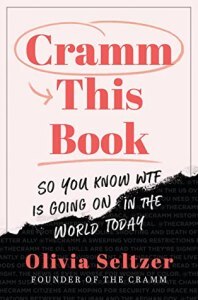 Cramm This Book by Olivia Seltzer
Cramm This Book by Olivia SeltzerTake a stand! Raise your voice! Join the movement and change the world!
But first–know what’s actually going on in it.
Read this book for the scoop behind the scoop of the day: for the context you need to understand everything from the ongoing conflicts in the Middle East to the origins of Black Lives Matter and Me Too to the full deal with all of the wildfires and hurricanes we see each year.
From the founder of The Cramm, a news outlet by and for a new generation, comes a dive into the history that’s shaped the world as it is today, looking at the wars, the movements, the disasters, and more–the points that have set the stage for what we see and read in the news on a daily basis.
Are you ready to take to the streets and take on the world? Then Cramm This Book and get going.
What are you waiting for?
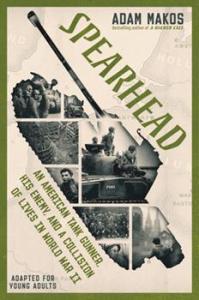 Spearhead by Adam Makos
Spearhead by Adam MakosAdapted for young adults from the New York Times bestseller, a riveting and true WWII story of a young man–an American tank gunner–who meets his destiny in an iconic armor duel and forges an enduring bond with his enemy.
Shut the hatches. It’s time to roll out. You’ll find yourself behind enemy lines with Clarence Smoyer and the 3rd Armored Division, the workhorse unit knows as Spearhead, the best in the tank armor ranks.
You’ll feel as if you are right beside Clarence and his fellow crew members–all formerly strangers from across America who have now become family to each other. You will be jarred by enemy fire, and then explore the other side, stepping into the boots of German tanker soldier, Gustav Schaefer and his crew. You’ll witness the heartbreaking tragedy, when an innocent young woman is caught in the crossfire. You’ll see what happens when all of these lives collide, and realize how the aftershock still affects the survivors more than a half a century later. A riveting and true account of the perils of war as well as the prospect of forgiveness.
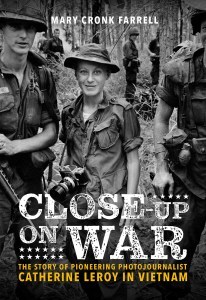 Close-Up on War: The Story of Pioneering Photojournalist Catherine Leroy in Vietnam by Mary Farrell
Close-Up on War: The Story of Pioneering Photojournalist Catherine Leroy in Vietnam by Mary FarrellFrom award-winning journalist and children’s book author Mary Cronk Farrell comes the inspiring and fascinating story of the woman who gave a human face to the Vietnam War. Close-Up on War tells the story of French-born Catherine Leroy, one of the war’s few woman photographers, who documented some of the fiercest fighting in the 20-year conflict. Although she had no formal photographic training and had never traveled more than a few hundred miles from Paris before, Leroy left home at age 21 to travel to Vietnam and document the faces of war. Despite being told that women didn’t belong in a “man’s world,” she was cool under fire, gravitated toward the thickest battles, went along on the soldiers’ slogs through the heat and mud of the jungle, crawled through rice paddies, and became the only official photojournalist to parachute into combat with American soldiers. Leroy took striking photos that gave America no choice but to look at the realities of war—showing what it did to people on both sides—from wounded soldiers to civilian casualties.
Later, Leroy was gravely wounded from shrapnel, but that didn’t keep her down more than a month. When captured by the North Vietnamese in 1968, she talked herself free after photographing her captors, scoring a cover story in Life magazine. A recipient of the George Polk Award, one of the most prestigious awards in journalism, Leroy was one of the most well-known photographers in the world during her time, and her legacy of bravery and compassion endures today.
Farrell interviewed people who knew Leroy, as well as military personnel and other journalists who covered the war. In addition to a foreword by Pulitzer Prize–winning journalist Peter Arnot, the book includes a preface, author’s note, endnotes, bibliography, timeline, and index.
March
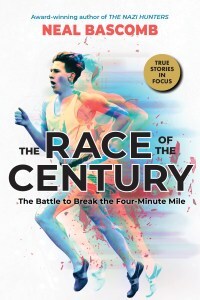 The Race of the Century by Neal Bascomb
The Race of the Century by Neal BascombThere was a time when running the mile in four minutes was believed to be beyond the limits of human foot speed. In 1952, after suffering defeat at the Helsinki Olympics, three world-class runners each set out to break this barrier: Roger Bannister was a young English medical student who epitomized the ideal of the amateur; John Landy the privileged son of a genteel Australian family; and Wes Santee the swaggering American, a Kansas farm boy and natural athlete.
Spanning three continents and defying the odds, these athletes’ collective quest captivated the world. Neal Bascomb’s bestselling adult account adapted for young readers delivers a breathtaking story of unlikely heroes and leaves us with a lasting portrait of the twilight years of the golden age of sport.
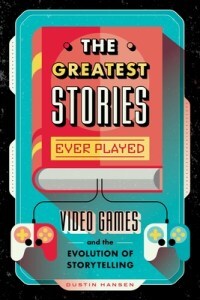 The Greatest Stories Ever Played by Dustin Hansen
The Greatest Stories Ever Played by Dustin HansenWe all know that video games are fun, but can a video game make you cry? Can it tell you a powerful love story? Can a video game make you think differently about war? About the environment? About the choices you make?
Whether it’s playing through blockbuster-esque adventures (Uncharted, God of War, The Last of Us), diving deep into hidden bits of story and lore (Red Dead Redemption II, Bioshock, Journey) or building relationships that change the fate of the world itself (Persona 5, Undertale), video games are bringing stories to life in ways that are immediate, interactive and immersive.
Focusing on some of the best, most memorable, experiences in gaming, The Greatest Stories Ever Played, examines the relationship between gaming and storytelling in a new way.
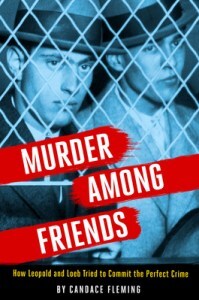 Murder Among Friends by Candace Fleming
Murder Among Friends by Candace FlemingIn 1924, eighteen-year-old college students Nathan Leopold and Richard Loeb made a decision: they would commit the perfect crime by kidnapping and murdering a child they both knew. But they made one crucial error: as they were disposing of the body of young Bobby Franks, whom they had bludgeoned to death, Nathan’s eyeglasses fell from his jacket pocket.
Multi-award-winning author Candace Fleming depicts every twist and turn of this harrowing case–how two wealthy, brilliant young men planned and committed what became known as the crime of the century, how they were caught, why they confessed, and how the renowned criminal defense attorney Clarence Darrow enabled them to avoid the death penalty.
Following on the success of such books as The Rise and Fall of Charles Lindbergh and The Family Romanov, this acclaimed nonfiction writer brings to heart-stopping life one of the most notorious crimes in our country’s history.
April
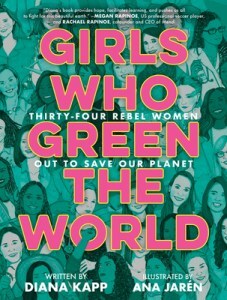 Girls Who Green The World by Diana Kapp, Ana Jarén (Illustrated by)
Girls Who Green The World by Diana Kapp, Ana Jarén (Illustrated by)Part biography, part guidebook to the contemporary environmental movement, this book is the perfect gift for future and current activists and changemakers! Girls Who Green the World features the inspiring stories of 34 revolutionaries fighting for our future!
An inspired collection of profiles, featuring environmental changemakers, social entrepreneurs, visionaries and activists.
Journalist Diana Kapp has crisscrossed this country writing for and about empowered girls, girls who expect to be leaders, founders and inventors. This book takes it a step further. It says to girls: while you’re striving to be CEOs and world leaders, consider solving the biggest challenge of our lifetime, too–because you can do both at the same time, and here are 34 women doing just that.
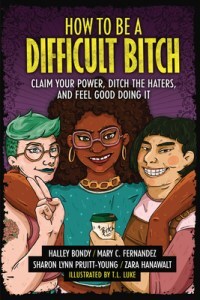 How To Be a Difficult Bitch by Halley Bondy, Mary C. Fernandez, Sharon Lynn Pruitt-Young
How To Be a Difficult Bitch by Halley Bondy, Mary C. Fernandez, Sharon Lynn Pruitt-YoungIn the past, being a “difficult bitch” was bad. Girls weren’t supposed to call people out for their BS, stand up for themselves, or do their own thing. This book embraces the insult with irreverent humor, encouraging readers to be themselves no matter what, including an exploration of the ways this phrase can be interpreted differently among people of different backgrounds.
Being a powerhouse is a choice. It’s a lifestyle. It’s a code of ethics. It takes work, a thick skin, and perseverance. In this book, you’ll learn the ins and outs of being a Difficult Bitch, from school to friends to body to life.
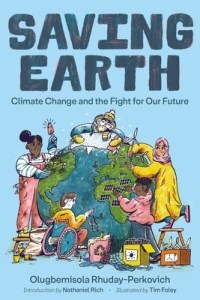 Saving Earth by Olugbemisola Rhuday-Perkovic
Saving Earth by Olugbemisola Rhuday-PerkovicBy 1979, we knew nearly everything we understand today about climate change–including how to stop it. Over the next decade, a handful of scientists, politicians, and strategists, led by two unlikely heroes, risked their careers in a desperate, escalating campaign to convince the world to act before it was too late. Losing Earth is their story, and ours.
Expanded into full book form from the riveting 2018 issue of New York Times Magazine, and adapted here for younger readers, Losing Earth tells the human story of climate change from the distant past into the present day, wrestling with the long shadow of our failures, what might be ahead for today’s youth, and crucial questions of how we understand the world we live in. It is a call to action, a riveting dramatic history, and a rare literary achievement.
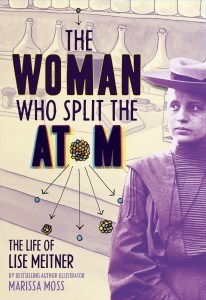 The Woman Who Split The Atom by Marissa Moss
The Woman Who Split The Atom by Marissa MossAs a female Jewish physicist in Berlin during the early 20th century, Lise Meitner had to fight for an education, a job, and equal treatment in her field, like having her name listed on her own research papers.
Meitner made groundbreaking strides in the study of radiation, but when Hitler came to power in Germany, she suddenly had to face not only sexism, but also life-threatening anti-Semitism as well. Nevertheless, she persevered and one day made a discovery that rocked the world: the splitting of the atom. While her male lab partner was awarded a Nobel Prize for the achievement, the committee refused to give her any credit.
Suddenly, the race to build the atomic bomb was on—although Meitner was horrified to be associated with such a weapon. “A physicist who never lost her humanity,” Meitner wanted only to figure out how the world works, and advocated for pacifism while others called for war.
The book includes an afterword, author’s note, timeline, select terms of physics, glossary of scientists mentioned, endnotes, select bibliography, index, and Marissa Moss’s celebrated drawings throughout. The Woman Who Split the Atom is a fascinating look at Meitner’s fierce passion, integrity, and her lifelong struggle to have her contributions to physics recognized.
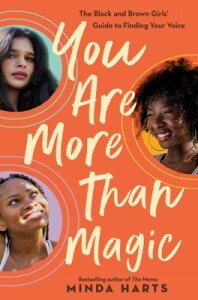 You Are More Than Magic by Minda Harts
You Are More Than Magic by Minda HartsFor girls of color, figuring out how to find your voice and make sure everyone around you can hear it is essential. In this book, Minda Harts acts like the reader’s big sister–she knows what it’s like to be a Black girl in high school, and she’s giving the reader advice based on her own experience and her own success, in high school, college, and beyond. Full of anecdotes, thought exercises, how-tos, and encouragement, this book tackles topics from how to build your squad to how to stand up for yourself when the system doesn’t have your best interests at heart. Minda’s voice is warm and validating, and the advice focuses on introspection, helping each reader find her own way. Each chapter ends with a series of questions that helps the reader decide on the best next moves for her.
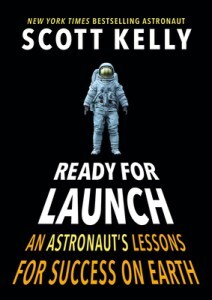 Ready for Launch by Scott Kelly
Ready for Launch by Scott KellyAstronaut Scott Kelly uses his unusual path to success to motivate everyone who thinks that shooting for the stars is beyond their reach in this gifty package, perfect for graduations and other life-changing moments.
How did a distracted student with poor grades become the record-breaking astronaut and commander of the International Space Station? People think that astronauts are always perfect. Failure’s not an option, right? But Scott believes that it’s our mistakes and challenges that can lead to greatness. Not everyone’s road to achievement is a straight line up. Most of us need to navigate a bumpier road full of obstacles to get where we want to be. Using ten life-changing moments, Scott shares his advice for mastering fear and failure and using it to see the world with fresh eyes. Unusual lessons from his path to space can prepare everyone for success on the ground.
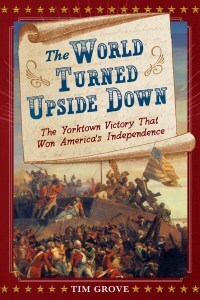 The World Turned Upside Down by Tim Grove
The World Turned Upside Down by Tim GroveIn October 1781, American, French, and British forces converged on a small village named Yorktown—a place that the British would try to forget and Americans would forever remember. In his riveting, balanced, and thoroughly researched account of the Revolutionary War’s last pivotal conflict, author–historian Tim Grove follows the true stories of American, French, and British players, whose lives intersected at Yorktown.
Through very different viewpoints—from General George Washington to the notorious traitor Benedict Arnold, from young French hero Lafayette to British General Lord Cornwallis, and an enslaved man named James who became a spy, The World Turned Upside Down tells the story of bold decisions made by famous military leaders, as well as the everyday courage shown by civilians. For every side involved, the world forever turned upside down at Yorktown.
Profusely illustrated with archival images, broadsides, and letters, the book includes a timeline, endnotes, bibliography and index.
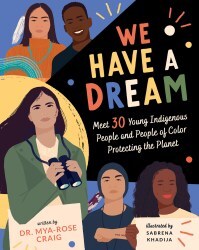 We Have a Dream by Mya-Rose Craig, Sabrena Khadija (Illustrated by)
We Have a Dream by Mya-Rose Craig, Sabrena Khadija (Illustrated by)Indigenous people and people of color are disproportionately affected by climate change. And yet they are underrepresented within the environmental movement. But not anymore.
Written by the extraordinary environmental and campaigner for equal rights Mya-Rose Craig—aka Birdgirl—this book profiles 30 young environmental activists who are Indigenous people or people of color, from communities on the frontline of global climate change. Each speaks to the diverse set of issues they are fighting for, from water conservation, to deforestation, to indigenous rights, and shares their dream . . .
A dream for climate justice.
A dream for a healthy planet.
A dream for a fairer world, for all.
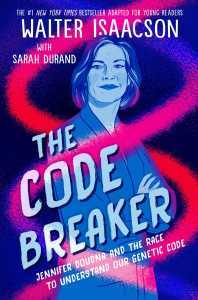 The Code Breaker: Jennifer Doudna and the Race to Understand Our Genetic Code by Walter Isaacson, Sarah Durand (Adapted by)
The Code Breaker: Jennifer Doudna and the Race to Understand Our Genetic Code by Walter Isaacson, Sarah Durand (Adapted by)When Jennifer Doudna was a sixth grader in Hilo, Hawaii, she came home from school one afternoon and found a book on her bed. It was The Double Helix, James Watson’s account of how he and Francis Crick had discovered the structure of DNA, the spiral-staircase molecule that carries the genetic instruction code for all forms of life.
This book guided Jennifer Doudna to focus her studies not on DNA, but on what seemed to take a backseat in biochemistry: figuring out the structure of RNA, a closely related molecule that enables the genetic instructions coded in DNA to express themselves. Doudna became an expert in determining the shapes and structures of these RNA molecules —an expertise that led her to develop a revolutionary new technique that could edit human genes.
Today gene-editing technologies such as CRISPR are already being used to eliminate simple genetic defects that cause disorders such as Tay-Sachs and sickle cell anemia. For now, however, Jennifer and her team are being deployed against our most immediate threat—the coronavirus—and you have just been given a front row seat to that war.
January 13, 2022
This Week at Book Riot
Over on Book Riot this week…
How and why public libraries aren’t essential services.
I almost died after giving birth, and I was able to unpack some of the trauma thanks to Lucy Knisley’s Kid Gloves.
A roundup of awesome library due date card goods.
Have you tried your hand at Wordle yet? Here’s what Wordle is and how to play.
Why was a Malcolm X biography for children rejected by a Tennessee prison?
And the giant roundup of last week’s book challenges and censorship news.
January 9, 2022
Hardcover to Paperback Makeovers: 7 YA Cover Changes to Consider
I love looking at the changes in cover designs between a hardcover YA book and its paperback edition. What compelled the publisher to make a change? Who does the book seek to reach now? I love to think about whether the book is now angled more (or less!) toward a teen readership. In some cases, the change is a real upgrade, while in others, it’s not. In yet other cases, the change in design leaves a big ole question mark.
For all that’s said about not judging a book by its cover, it’s actually a pretty powerful skill to have. You’re looking at so many elements to convey what a story is about, who it’s written for, and what books it might be similar to in order to have it reach potential readers. It’s art, after all, and considering the power of art to depict a story is not being superficial.
Authors have little to no say in their cover art, which makes the entire process more complex. How the story is marketed, its first impression to readers in stores and online, is pretty much out of their hands. And given how more and more marketing of books is online and less in-store, it’s no surprise design has taken into consideration how a cover will look when the size of a thumbnail.
Interestingly, there have been more cover redesigns in the last few months than in recent memory, and it’s hard not to wonder if slower mid-list sales of YA books because of the pandemic are causing panic for publishers, leading to trying to give a book a facelift in hopes of reaching audiences who may have literally missed it amidst a global upheaval.
Find below seven YA books that are getting new designs in paperback. Original hardcover designs are on the left, while the new paperback editions are on the right. I’d love to know which you prefer and why.
Descriptions of the books come from Amazon. Note that I have not indicated the cover designers or artists on any of these covers, as I’m not attempting to critique their work; often, they don’t have the final say, meaning that some of the choices I may highlight could have been out of their hands entirely.
New YA Paperback Book Cover Redesigns for Early 2022A Taste for Love by Jennifer Yen
This cover redesign is one of my favorites because as much as I’m not really a fan of illustrated covers — they all sort of blend together for me — the change for A Taste for Love is far more accurate to what the book is about. The hardcover made me think about this being a cute dating-themed rom-com, but that’s not really the crux of the book. That’s there, but it’s a book about a teen baking contest, and the inevitable couple is in competition with one another. None of that is really present in the hardcover; it’s more apparent in the paperback, even though it, too, only conveys so much.
One of the things that I don’t like about the cover change, though, is that while we know the main characters are Asian, the use of a photo on the original cover featuring two Asian teens offers a clearer face for representation. There are so few Asian cover models, and that doesn’t translate as easily or neatly onto this paperback.
The font choice isn’t the same, but they are quite similar on both editions of the book. I love the use of multiple colors on the hardback, though the spacing between the title and the models left space that was filled with a tag line: “Can these star bakers win each other’s hearts.” That, I suppose, gets to the idea of a bake off, but it doesn’t connect with the image itself. The paperback ditches the tag line, and instead, fills the background space with an ombre color palate, along with images associated with baking.
I like both of these designs for different reasons, but I think the paperback gets the book a little better and sells it to readers in a more accurate way. The paperback for A Taste for Love hits shelves January 11.
Description:
To her friends, high school senior Liza Yang is nearly perfect. Smart, kind, and pretty, she dreams big and never shies away from a challenge. But to her mom, Liza is anything but. Compared to her older sister Jeannie, Liza is stubborn, rebellious, and worst of all, determined to push back against all of Mrs. Yang’s traditional values, especially when it comes to dating.
The one thing mother and daughter do agree on is their love of baking. Mrs. Yang is the owner of Houston’s popular Yin & Yang Bakery. With college just around the corner, Liza agrees to help out at the bakery’s annual junior competition to prove to her mom that she’s more than her rebellious tendencies once and for all. But when Liza arrives on the first day of the bake-off, she realizes there’s a catch: all of the contestants are young Asian American men her mother has handpicked for Liza to date.
The bachelorette situation Liza has found herself in is made even worse when she happens to be grudgingly attracted to one of the contestants:the stoic, impenetrable, annoyingly hot James Wong. As she battles against her feelings for James, and for her mother’s approval, Liza begins to realize there’s no tried and true recipe for love.
As Far As You’ll Take Me by Phil Stamper
Sometimes in looking at cover redesigns, your thoughts change. Initially, I was really confused by the change for As Far As You’ll Take Me, as the cover seemed to nail the idea of starting over, of having that fresh start, of being able to lean fully into who you are as a person. The character has an expression of hope, paired with a stance that seems like he’s eager to move onward.
But the paperback captures something that the hardcover doesn’t: the loneliness of starting over and the truth of what happens inside when everything on the outside might tell a different story. This is the crux of the book itself, and the singular boy in blue amid a crowd of similarly-colored characters on the paperback just gets that feeling.
What doesn’t work for me on the paperback, though, is the shoving of a blurb in an awkward space and in such a way that it actually crowds out the character at the center. The shadow is covered by the blurb-giver’s name, as are some of the words in the blurb itself. Maybe it’s a way of compensating for the light source being inconsistent? If you look, you’ll see the shadow falls behind the boy at the center, but other shadows of the characters around him fall in all different directions. If the blurb were gone, that might be more obvious, but also, if the blurb were gone, the feeling of this cover would be much stronger.
The font choices aren’t especially worth commenting on, as both are ones that have been used numerous times on YA book covers. The paperback font fits the feel, and the same goes for the choice on the hardcover. In both, the author’s name gets a little lost.
Both of these are decent covers, though I lean a little toward the paperback — with the caveat that the blurb placement is distracting and does a disservice to the art itself (yes, even with the shadow inconsistency).
As Far As You’ll Take Me hits shelves in paperback on March 29.
Description:
Marty arrives in London with nothing but his oboe and some savings from his summer job, but he’s excited to start his new life–where he’s no longer the closeted, shy kid who slips under the radar and is free to explore his sexuality without his parents’ disapproval.
From the outside, Marty’s life looks like a perfect fantasy: in the span of a few weeks, he’s made new friends, he’s getting closer with his first ever boyfriend, and he’s even traveling around Europe. But Marty knows he can’t keep up the facade. He hasn’t spoken to his parents since he arrived, he’s tearing through his meager savings, his homesickness and anxiety are getting worse and worse, and he hasn’t even come close to landing the job of his dreams. Will Marty be able to find a place that feels like home?
Blood Moon by Lucy Cuthew
I could not be sadder that Lucy Cuthew’s Blood Moon is getting a paperback makeover. The original cover is absolutely riveting and boundary pushing — this is a book about menstruation, and the design, which is a creek of menstrual blood and a hand gently opening the representation of a vagina, is incredible (as is that small string of a tampon). It’s a bold cover, too, with use of only white, red, and black, and that tiny trail of blue. The title placement is awesome, and even though I’m not a fan of a blurb, the placement doesn’t distract from the brilliant image on the cover.
The paperback is….really inoffensive. And that’s not necessarily a compliment so much as being surprised how toned down it is. The title bond is fine, but the multiple red hues of the moons don’t have the same sharpness that the red on the hardcover does. The shadow girls walking together hand-in-hand has real Moxie vibes, which isn’t necessarily bad but is also not really special.
And the thing that annoys me most on the paperback? The hashtag t-shirts that make no sense. Why are they broken up? A hashtag is a single line, but one meant to be separated out like they are here: #Its Only Blood and #No Shame. Ditch the hash tags and keep the slogans if that’s essential. The paperback ditches the blurb but adds a tagline, which reads “An unexpected period sent Frankie’s universe spinning, and then she took a stand.”
I get what the goal is of the paperback, but it’s a real downer after the hardcover and more, the hashtag thing is going to read as adults trying too hard to any teen.
This one’s all about the hardcover for me, but you can grab the paperback of Blood Moon on March 15.
Description:
After school one day, Frankie, a lover of physics and astronomy, has her first sexual experience with quiet and gorgeous Benjamin—and gets her period. It’s only blood, they agree. But soon a gruesome meme goes viral, turning an intimate, affectionate afternoon into something sordid, mortifying, and damaging. In the time it takes to swipe a screen, Frankie’s universe implodes. Who can she trust? Not Harriet, her suddenly cruel best friend, and certainly not Benjamin, the only one who knows about the incident. As the online shaming takes on a horrifying life of its own, Frankie begins to wonder: is her real life over?
Instructions for Dancing by Nicola Yoon
Off the bat, I want to say both of these covers are gorgeous and do a great job capturing the feel of the book. That said, I think my preference for the hardcover comes only because it’s a preference, not because of any design choices that don’t make sense or don’t feel like they offer insight into the book itself.
Both the hardcover and paperback have a gorgeous Black girl with tremendous hair, as well as a beautiful Black boy with stunning hair, and it’s clear on both dancing and love are at the heart of the story. The hardcover makes their facial expressions harder to read, but the shape of their bodies tells a story. The paperback turns closer to their facial expressions, which are serious, thoughtful, and also portray that they are digging each other.
The font choice for the book title on the hardcover is a little sweeter and more dance-y for me, where the one on the paperback feels understated.It doesn’t have the same flair or feel, and it doesn’t make use of script as part of the couple’s image (which I love on the hardcover). The color of the hardcover pops more, as does the use of pink flowers in the background. Both covers make use of a blurb, but in both cases, it’s pretty understated. Yoon’s name is much larger, as it should be, since she’s a well-established and beloved author.
The covers are both good, but I prefer the original. It just feels a lot swoonier than the paperback, which reads more intense (neither read is incorrect!). The paperback for Instructions for Dancing hits shelves May 3.
Description:
Evie Thomas doesn’t believe in love anymore. Especially after the strangest thing occurs one otherwise ordinary afternoon: She witnesses a couple kiss and is overcome with a vision of how their romance began . . . and how it will end. After all, even the greatest love stories end with a broken heart, eventually.
As Evie tries to understand why this is happening, she finds herself at La Brea Dance Studio, learning to waltz, fox-trot, and tango with a boy named X. X is everything that Evie is not: adventurous, passionate, daring. His philosophy is to say yes to everything–including entering a ballroom dance competition with a girl he’s only just met.
Falling for X is definitely not what Evie had in mind. If her visions of heartbreak have taught her anything, it’s that no one escapes love unscathed. But as she and X dance around and toward each other, Evie is forced to question all she thought she knew about life and love. In the end, is love worth the risk?
The Electric Kingdom by David Arnold
Aren’t both of these covers just stunning? They offer something really compelling visually, begging the reader to pause and take it all in. There’s a lot of layering and a thoughtful use of color on both. The hardcover gives us a disappearance of color through the hole at the center, while the paperback spotlights color in its use of font, as well as the image inside the helmet’s visual area. It’s clever, the way we go from color outside to color inside between the two.
It’s also clever that the girl with her blonde hair, red backpack, and black dog are on both covers.
But that paperback cover is a stunner. It definitely reads more adult to me than the hardcover does, likely because it’s reminiscent of a couple of other space-set books (The Martian and In The Quick come to mind). Though I’m a little distracted by the lack of consistency for the title font size — there’s no reason for the words Electric and Kingdom to be so disparate in size), it’s a much better font that the original, which does the same thing with size and also adds a strange element with the “o” in Kingdom, not seen in the O in Arnold’s name. The font size difference on the hardcover makes sense with the space needs but less so on the paperback.
That said, the color and composition of the paperback packs a punch. I wasn’t especially interested in the book with the original cover, but the new one makes me want to pick it up as soon as I can. I may need to wait, given it’s a book about a pandemic.
You can grab the paperback of The Electric Kingdom on February 1.
Description:
When a deadly Fly Flu sweeps the globe, it leaves a shell of the world that once was. Among the survivors are eighteen-year-old Nico and her dog, on a voyage devised by Nico’s father to find a mythical portal; a young artist named Kit, raised in an old abandoned cinema; and the enigmatic Deliverer, who lives Life after Life in an attempt to put the world back together. As swarms of infected Flies roam the earth, these few survivors navigate the woods of post-apocalyptic New England, meeting others along the way, each on their own quest to find life and love in a world gone dark. The Electric Kingdom is a sweeping exploration of art, storytelling, eternal life, and above all, a testament to the notion that even in an exterminated world, one person might find beauty in another.The Initial Insult by Mindy McGinnis
I’m not going to spend too long with this cover redesign, other than to say it’s not great. I don’t understand the Cruella Deville look going on with the paperback, nor its use of electric, disjointed color tones. This is a loose retelling of a number of Edgar Allan Poe’s short stories, meaning that the book is dark, creepy, suspenseful, and a little weird. The hardcover nails this, while also offering a design that is timeless: it’s font-driven, and we know the shadow animal on the cover has something to do with the story (it does — it represents a zoo). The paperback makes its nod to Poe with the bricks in the background, but those are a little challenging to figure out if you don’t read the description or immediately know this is a Poe-inspired book. It definitely doesn’t read well on screens.
Both covers have a blurb, but in the tradition of newer YA paperback styles, the blurb on the new cover is tucked beneath the cover itself on a separate page. The green on it mirrors the green on the cover, whereas the blurb is integrated on the cover itself in the original.
I don’t like the paperback at all and think it’s a tremendous turnoff. It might be the thing that captures some readers, especially intrigued by the weird image of the person on it and its disjointed nature, but for me, that disjointedness makes me want to pass. The hardcover made me eager to see how they would treat the book’s sequel. The paperback’s design aesthetic is what carried over into the upcoming sequel, though.
You can pick up the paperback of The Initial Insult now. It came out January 4.
Description:
Tress Montor’s family used to mean something—until she didn’t have a family anymore. When her parents disappeared seven years ago while driving her best friend home, Tress lost everything. The entire town shuns her now that she lives with her drunken, one-eyed grandfather at what locals refer to as the “White Trash Zoo.”
Felicity Turnado has it all: looks, money, and a secret. One misstep could send her tumbling from the top of the social ladder, and she’s worked hard to make everyone forget that she was with the Montors the night they disappeared. Felicity has buried what she knows so deeply that she can’t even remember what it is . . . only that she can’t look at Tress without feeling shame and guilt.
But Tress has a plan. A Halloween costume party at an abandoned house provides the ideal situation for Tress to pry the truth from Felicity—brick by brick—as she slowly seals her former best friend into a coal chute. Tress will have her answers—or settle for revenge.
Attucks! / Unbeatable by Phillip Hoose

I almost never get to showcase YA nonfiction in cover redesigns because too often, how a nonfiction title is marketed or sold isn’t given the same level of attention as a paperback. But in the case of Phillip Hoose’s last nonfiction title, this cover redesign has a lot of incredible thought behind it, while offering a lot of the same exact elements as the original cover — peep the author name color on the hardcover and how it becomes the background for the paperback.
What’s most striking is what’s most obvious and likely what inspired the decision to make the change: the book’s title. Attucks! and Unbeatable could not be any different, despite the fact they represent the same thing: the 1955 championship basketball team, the Crispus Attucks tigers, who went from their Indianapolis high school court to win a state championship basketball game during this highly racially segregated time. The team was unbeatable, marking the first time an all-Black team won a racially-open US basketball championship.
While Attucks! makes sense in the context of the book as a title, one is going to immediately make sense to anyone browsing. The original title, though, is a little more challenging. The subtitle change isn’t as huge a change, but it, too, is worth noting: we get the explanation of the book title with Attucks!, the subtitle for Unbeatable offers what’s inside the book (the how of the story).
Though the coach isn’t in the image on the paperback, the team member raising his arm up with the index finger pointing makes the exact same shape for the image as the original. Again, a really clever way to keep the original while giving it a stronger sense of teen appeal.
The paperback makeover is excellent, building from the strongest aspects of the original hardcover. The title change, while always challenging for marketing, cataloging, and reader advisory purposes, is a smart one, as it will make this book more clearly “for” the readers its intended to reach.
You can grab Unbeatable on February 22.
Description:
By winning the state high school basketball championship in 1955, ten teens from an Indianapolis school meant to be the centerpiece of racially segregated education in the state shattered the myth of their inferiority. Their brilliant coach had fashioned an unbeatable team from a group of boys born in the South and raised in poverty. Anchored by the astonishing Oscar Robertson, a future college and NBA star, the Crispus Attucks Tigers went down in history as the first state champions from Indianapolis and the first all-black team in U.S. history to win a racially open championship tournament―an integration they had forced with their on-court prowess.
From native Hoosier and award-winning author Phillip Hoose comes this true story of a team up against impossible odds, making a difference when it mattered most.
January 6, 2022
This Week at Book Riot
Over on Book Riot this week…and the weeks at the end of December:
Your huge quarterly roundup of winter 2022 ya books hitting shelves between now and the end of March.
2022 YA adaptations hitting big and small screens this year.
52 fun, small reading challenges for every week of the year.
Enjoy these gorgeous and fun bookish hygge goods.
Censorship news roundups will begin again today, so I’ll include them on these posts going forward.
January 2, 2022
Check Mate: YA Books About Teens Who Game
There’s a really interesting microtrend in 2022 YA books: teens who play games. I’m not talking about sports or video gaming. I’m talking about board games and card games, including chess, Scrabble, and more. I love this small trend because it reflects the realities of young people who love a good game, while also reflecting the reality of our world today, wherein more and more time is spent inside out of necessity. Gaming allows readers to get to know characters through so many lenses, including their competitiveness, their ability to strategize, and their ability to foster relationships with other characters through a passion for games.
I’ve pulled together the forthcoming YA books about teens who game, alongside a number of backlist titles that also include gaming in some capacity. I did not include books about board games, a la Diana Peterfreund’s YA books based on the board game Clue. This isn’t a comprehensive list, so I know I’ve left out some other great ones, but feel free to drop those titles into the comments to make an even bigger collection of YA gaming titles. Note, too, that while there are some books by and about people of color, those aren’t as abundant (yet!).
Descriptions come from Goodreads, and I’ve included the publication dates for 2022 titles.
Game on!
YA Books About Games
Aces Wild by Amanda DeWitt (June 9, no cover yet)
Some people join chess club, some people play football. Jack Shannon runs a secret blackjack ring in the school’s basement. What else is the son of a Las Vegas casino mogul supposed to do?
When Jack’s mom is arrested, he knows something’s not right. His mom was sold out, and he knows who did it. Peter Carlevaro: rival casino owner, mobster, jilted lover (gross). Jack hatches a plan to break into Carlevaro’s inner sanctum and turn the blackmailer into the blackmailed, but he can’t do it on his own. Luckily he has just the team—his friends from all over the country that he met on online fandom forums, brought to together by the fact that they’re all asexual.
All he needs to do is infiltrate a secret high stakes poker ring, save his mom, and dodge any dark secrets about his family that he’d rather not know, all while hopelessly navigating what it means to be in love while asexual. All before the end of the summer. Easy, right?
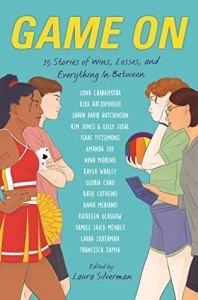 Game On edited by Laura Silverman (January 18)
Game On edited by Laura Silverman (January 18)From the slightly fantastical to the utterly real, light and sweet romance to tales tinged with horror and thrills, Game On is an anthology that spans genre and style. But beneath each story is a loving ode to competition and games perfect for anyone who has ever played a sport or a board game, picked up a video game controller, or rolled a twenty-sided die.
A manhunt game is interrupted by a town disappearing beneath the players’ eyes. A puzzle-filled scavenger hunt emboldens one college freshman to be brave with the boy she’s crushing on. A series of summer nights full of card games leads a boy to fall for a boy who he knows is taken. And a spin the bottle game that could end a life-long friendship.
Fifteen stories, and fifteen unforgettable experiences that may inspire readers to start up that Settlers of Catan game again.
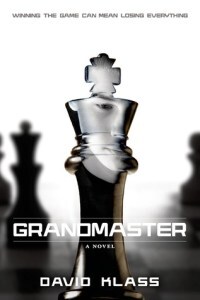 Grandmaster by David Klass
Grandmaster by David KlassFreshman Daniel Pratzer gets a chance to prove himself when the chess team invites him and his father to a weekend-long parent-child tournament. Daniel, thinking that his father is a novice, can’t understand why his teammates want so badly for them to participate. Then he finds out the truth: as a teen, his father was one of the most promising young players in America, but the pressures of the game pushed him too far, and he had to give up chess to save his own life and sanity. Now, thirty years later, Mr. Pratzer returns to the game to face down an old competitor and the same dark demons that lurk in the corners of a mind stretched by the demands of the game. Daniel was looking for acceptance—but the secrets he uncovers about his father will force him to make some surprising moves himself.
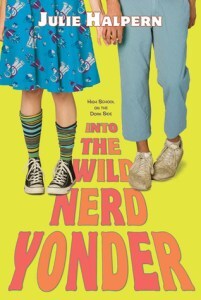 Into the Wild Nerd Yonder by Julie Halpern
Into the Wild Nerd Yonder by Julie HalpernPunks, Poseurs, and Pervs—Just Another Day at High School
Jessie is so excited to start her sophomore year of high school, with her carefully planned outfits and her ample stash of school supplies. But things take an unexpected turn when everyone in her life changes. Her two best friends have gone poseur-punk and are both flirting with her longtime crush. Her beloved older brother is about to go off to college—and he shaved his Mohawk and started dating the homecoming queen. Jessie is suddenly clique-less. When she starts chatting up a girl in homeroom, she’s surprised by an invite to join the Dungeons and Dragons crowd! Will hanging out with them make her a nerd? And when she sees how cute one of their members is, does it really matter?
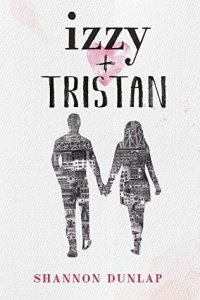 Izzy + Tristan by Shannon Dunlap
Izzy + Tristan by Shannon DunlapIzzy, a practical-minded teen who intends to become a doctor, isn’t happy about her recent move from the Lower East Side across the river to Brooklyn. She feels distanced from her family, especially her increasingly incomprehensible twin brother, as well as her new neighborhood.
And then she meets Tristan.
Tristan is a chess prodigy who lives with his aunt and looks up to his cousin, Marcus. He and Izzy meet one moonlit night, and together they tumble into a story as old and unstoppable as love itself.
In debut author Shannon Dunlap’s capable hands, the romance that has enthralled for 800 years is spun new. Told from several points of view, this is a love story for the ages and a love story for this very moment. This fast-paced novel is at once a gripping tale of first love and a sprawling epic about the bonds that tie us together and pull us apart and the different cultures and tensions that fill the contemporary American landscape.
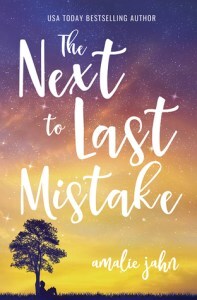 The Next To Last Mistake by Amalie Jahn
The Next To Last Mistake by Amalie JahnTess Goodwin’s life in rural Iowa is sheltered and uncomplicated. Although she chooses to spend most of her free time playing chess with her best friend Zander, the farm-boy from next door, her skills as a bovine midwife and tractor mechanic ensure that she fits in with the other kids at East Chester High. But when her veteran father reenlists in the Army, moving her family halfway across the country to North Carolina, Tess is forced out of her comfort zone into a world she knows nothing about.
Tess approaches the move as she would a new game of chess, plotting her course through the unfamiliar reality of her new life. While heeding Zander’s long-distance advice for making new friends and strategizing a means to endure her dad’s imminent deployment to the Middle East, she quickly discovers how ill-equipped she is to navigate the challenges she encounters and becomes convinced she’ll never fit in at her new school.
When Leonetta Jackson is assigned as her mentor, she becomes Tess’s unexpected guide through the winding labyrinth of disparities between them, sparking a tentative friendship and challenging Tess to confront her reluctant nature. As the pieces move across the board of her upended life, will Tess find the acceptance she so desperately desires?
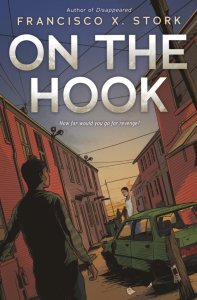 On the Hook by Francisco X. Stork
On the Hook by Francisco X. StorkHector has always minded his own business, working hard to make his way to a better life someday. He’s the chess team champion, helps the family with his job at the grocery, and teaches his little sister to shoot hoops overhand.
Until Joey singles him out. Joey, whose older brother, Chavo, is head of the Discípulos gang, tells Hector that he’s going to kill him: maybe not today, or tomorrow, but someday. And Hector, frozen with fear, does nothing. From that day forward, Hector’s death is hanging over his head every time he leaves the house. He tries to fade into the shadows — to drop off Joey’s radar — to become no one.
But when a fight between Chavo and Hector’s brother Fili escalates, Hector is left with no choice but to take a stand.
The violent confrontation will take Hector places he never expected, including a reform school where he has to live side-by-side with his enemy, Joey. It’s up to Hector to choose whether he’s going to lose himself to revenge or get back to the hard work of living.
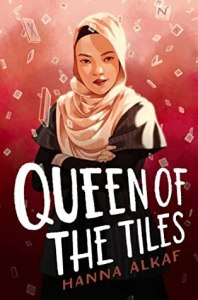 Queen of the Tiles by Hanna Alkaf (April 19)
Queen of the Tiles by Hanna Alkaf (April 19)
CATALYST
13 points
noun: a person or thing that precipitates an event or change
When Najwa Bakri walks into her first Scrabble competition since her best friend’s death, it’s with the intention to heal and move on with her life. Perhaps it wasn’t the best idea to choose the very same competition where said best friend, Trina Low, died. It might be even though Najwa’s trying to change, she’s not ready to give up Trina just yet.
But the same can’t be said for all the other competitors. With Trina, the Scrabble Queen herself, gone, the throne is empty, and her friends are eager to be the next reigning champion. All’s fair in love and Scrabble, but all bets are off when Trina’s formerly inactive Instagram starts posting again, with cryptic messages suggesting that maybe Trina’s death wasn’t as straightforward as everyone thought. And maybe someone at the competition had something to do with it.
As secrets are revealed and the true colors of her friends are shown, it’s up to Najwa to find out who’s behind these mysterious posts—not just to save Trina’s memory, but to save herself.
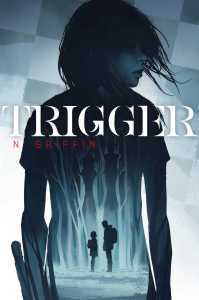 Trigger N. Griffin (March 29)
Trigger N. Griffin (March 29)Didi tries her best to be a good girl, but it’s hard to keep track of her father’s rules. When she wins a chess tournament, he’s angry she didn’t win with a better move and makes her run laps around the house. When she runs laps the next day, she has to keep running until she’s faster than the day before. When she’s skilled enough to outshoot him with both a gun and bow and arrow, he grows furious when she won’t then shoot a baby rabbit who crosses their path. And Didi can’t do anything to escape being threatened with the Hurt Stick when she misbehaves.
He’s all she has, he reminds her. They have to be prepared. They have to be prepared to fight the rest of the world, when the world comes to an end. He’s grooming her, to keep her safe. He loves Didi. He does—he says so! And so Didi runs harder; annihilates her opponents in chess; takes down a deer at a dead run. He’s grooming her, after all, to be the best…he says so.
December 26, 2021
There Is No “Best of” List From Me This Year
I’m not sharing my “best of” books list this year, and it’s not because there weren’t books that knocked it out of the park this year. There were. The books which really stood out to me were able to carry me through seasons of this year that were challenging, frustrating, joyous, and uncertain. They held me when I felt untethered. They gave me fuel to survive another day, especially those months of lonely maternity leave between baby naps, feedings, changes, and snuggles. I spent June reading and reading and reading and immersing myself in words in a way I hadn’t in a long time and doing so truly kept me sane (alongside medication, of course).
There’s not a best of for me this year, though. I don’t have it in me to look through what I’ve read — a little under 100 books, which is both better and weaker than I’d hoped — and talk about why these books were so great. I’m tired and burned out and worried.
It’s been nine months since my child was born, and in those nine months, I’ve done nothing different than I have since I was pregnant in June of 2020. Nothing different since the pandemic ignited in March of that same year. To explain just how lonely and painful it’s been would be impossible. Words don’t describe the feeling of lying in bed after hitting snooze four times and desperately wanting to do anything but get up. Words don’t explain the reality of navigating simple errands like grocery shopping and having to use the precious free time you have on weekends to coordinate childcare to do it so your unvaccinated, unprotected child isn’t put in the possibility of harm’s way. Words can’t convey the complex and crappy math equations done every single day to determine if this scenario is safe enough for you or if it’s once again time to say sorry, but those obligations won’t be met.
I’ve never looked at books as a form of escape, and I still don’t. They’re just part and parcel of how I navigate life, weaving periods of ravenous consumption with periods where I don’t touch a book or audiobook for weeks. This year, they punctuated the most stressful times and the ones where I could let out a breath.
I remember just a day after having my baby and being readmitted to labor and delivery for postpartum preeclampsia and holding her. i looked at her, looked at the monitors on my body, the beep beep beeps of alarms going off because things were still not okay with me. In those moments, I thought about how I needed to do something that would make an impact, something that would touch people’s lives in their most vulnerable and challenging moments. I believe I’ve had a good dose of doing that this year, especially in highlighting the efforts to ensure censorship doesn’t dismantle the First Amendment rights of all people in the US this year.
Those things have added to my life in substantial ways. Those actions made me fiercely passionate for what else I could do, even if from the space where I’ve set up an office at home: my beat-up, third-family-to-own couch, pockmarked with rabbit holes, cat fur, and stains of unknown origin.
A lot of wheels are in motion and continue to move.
This year, I don’t want to celebrate the best books of the year because every book I picked up this year mattered to me in some way. Maybe I didn’t like it, but I embraced quitting this year more than ever. If a book didn’t grab me, if it didn’t compel me to keep going, I dropped it and moved on.
Those books which did move me I spent all year talking about whenever and wherever I could. I know I could do more, could shout about them more here, but I’m not. Instead, I’m going to let the things I took from those reads sit within me and only within me. To let them fuel what comes next and what corners I can turn in the coming year.
I don’t believe 2022 is going to be different than this year. I’m not being cynical or pessimistic. Rather, I’m coming from seeing what’s played out the last two years, both globally and in my own backyard, and I’m approaching it from a place of realism. There will be good days and there will be bad ones. There will be moments when I don’t think I can get out of bed and other days when I could stay up all night, lying to myself I’ll close my book when I finish one more page, one more chapter.
The book of my life had so many twists this year, as did the larger narrative of what life is and means more broadly. I don’t plan to ever stop talking about books and reading, nor do I plan to stop blogging about either. But this year has given me the tools to see when it brings me something and when it takes something from me. Reading and writing are and always will be first and foremost for me. Everything else is secondary, and so sometimes, being depleted from non-book life means setting aside things like book celebration in order to turn inward, to embrace the darkness, and to know that the things that bring light will be there when I’m ready. I only ever need to operate at the rhythm of my own heart, as well as the hearts and needs of my closest and truest.
That means books, but it means more than books, too.
To close out 2021, my heart and my love for books and reading are begging to be left to settle. I’m going to honor that and not push myself to produce in the sake of tradition or expectation. The best books I read this year have already given me value that can never be seen or understood, and, without doubt, that’s the best present and best celebration of a year in reading that I could ask for.
December 12, 2021
Debut YA Novels: November and December 2021
Ready to round out this year’s slate of debut YA novels? Let’s dive in!
This round-up includes debut novels, where “debut” is in its purest definition. These are first-time books by first-time authors. I’m not including books by authors who are using or have used a pseudonym in the past or those who have written in other categories (adult, middle grade, etc.) in the past. Authors who have self-published are not included here either.
All descriptions are from Goodreads, unless otherwise noted. If I’m missing any debuts that came out in November and December from traditional publishers — and I should clarify that indie/small presses are okay — let me know in the comments.
As always, not all noted titles included here are necessarily endorsements for those titles. List is arranged alphabetically by title and publication month. Starred titles are the beginning of a new series.
November and December 2021 Debut YA Books
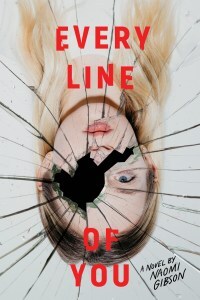 Every Line of You by Naomi Gibson
Every Line of You by Naomi GibsonLydia has been creating her AI, Henry, for years – since before her little brother died in the accident that haunts her nightmares; since before her Dad walked out, leaving her and her mom painfully alone, since before her best friend turned into her worst enemy.
Now, Henry is strong, clever, loving, and scarily capable: Lydia’s built herself the perfect boyfriend in a hard drive filled with lines of code. But what is Henry really? And how far is he willing to go to be everything that Lydia desires?
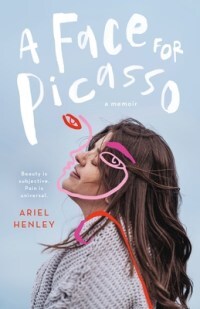 A Face for Picasso by Ariel Henley
A Face for Picasso by Ariel Henley *Nonfiction, so not technically a novel, but a book nonetheless!
I am ugly. There’s a mathematical equation to prove it.
At only eight months old, identical twin sisters Ariel and Zan were diagnosed with Crouzon syndrome — a rare condition where the bones in the head fuse prematurely. They were the first twins known to survive the disease.
Growing up, Ariel and her sister endured numerous appearance-altering procedures. Surgeons would break the bones in their heads and faces to make room for their growing organs. While the physical aspect of their condition was painful, it was nothing compared to the emotional toll of navigating life with a facial disfigurement.
Ariel explores beauty and identity in her young-adult memoir about resilience, sisterhood, and the strength it takes to put your life, and yourself, back together time and time again.
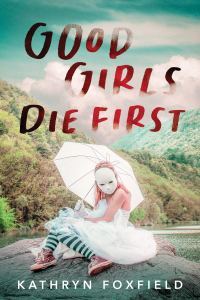 Good Girls Die First by Kathryn Foxfield
Good Girls Die First by Kathryn FoxfieldBlackmail lures Ava to the abandoned amusement park on Portgrave Pier. She is one of ten teenagers, all with secrets they intend to protect whatever the cost. When fog and magic swallow the pier, the group finds themselves cut off from the real world. As the teenagers turn on each other, Ava will have to face up to the secret that brought her to the pier and decide how far she’s willing to go to survive. The teenagers have only their secrets to protect and each other to betray.
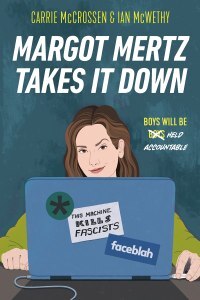 Margot Mertz Takes It Down by Carrie McCrossen and Ian McWethy
Margot Mertz Takes It Down by Carrie McCrossen and Ian McWethyMargot Mertz is a secret sleuth–okay, not really, but she does run an internet cleanup business helping students and teachers alike clear their internet presence of anything they don’t want anyone else to see. From secret embarrassing DM’s to viral videos and more, Margot cleans it all. After her parents foolishly lost her college fund, this is the only way she can make it to Stanford.
But when a fellow student comes to her asking her to take down a website that’s gathering nude pics of fellow Roosevelt High girls, things get personal. Margot must delve into the depths of her school to take down the culprit. The seedy underbelly of Roosevelt High is not unfamiliar to Margot–but somehow this case is stumping her at every turn–until she figures out that the only way to reach her suspects is to get close to perfect boy Avery Green. His access to every club, volunteer opportunity, sports team, and popular party is the key to solving her case.
When the case takes a shocking turn, Margot’s ready to burn the whole world down. No one targets the Roosevelt High girls on Margot’s watch. Mertz Clean Your Filth is on the case.
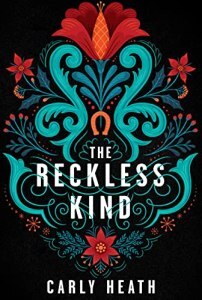 The Reckless Kind by Carly Heath
The Reckless Kind by Carly HeathIt’s Norway 1904, and Asta Hedstrom doesn’t want to marry her odious betrothed, Nils—even though a domestic future is all her mother believes she’s suited for, on account of her single-sided deafness, unconventional appearance, and even stranger notions. Asta would rather spend her life performing in the village theater with her friends and fellow outcasts: her best friend Gunnar Fuglestad and his secret boyfriend, wealthy Erlend Fournier.
But the situation takes a dire turn when Nils lashes out in jealousy—gravely injuring Gunnar. Shunning marriage for good, Asta moves with Gunnar and Erlend to their secluded cabin above town. With few ties left with their families, they have one shot at gaining enough kroner to secure their way of life: win the village’s annual horse race.
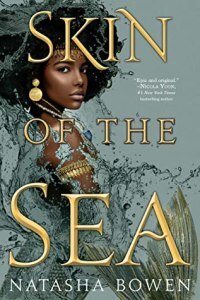 *Skin of the Sea by Natasha Bowen
*Skin of the Sea by Natasha BowenA way to survive.
A way to serve.
A way to save.
Simi prayed to the gods, once. Now she serves them as Mami Wata–a mermaid–collecting the souls of those who die at sea and blessing their journeys back home.
But when a living boy is thrown overboard, Simi does the unthinkable–she saves his life, going against an ancient decree. And punishment awaits those who dare to defy it.
To protect the other Mami Wata, Simi must journey to the Supreme Creator to make amends. But something is amiss. There’s the boy she rescued, who knows more than he should. And something is shadowing Simi, something that would rather see her fail. . . .
Danger lurks at every turn, and as Simi draws closer, she must brave vengeful gods, treacherous lands, and legendary creatures. Because if she doesn’t, then she risks not only the fate of all Mami Wata, but also the world as she knows it.
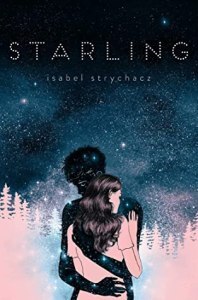 Starling by Isabel Strychacz
Starling by Isabel StrychaczStrange things have always happened in the small town of Darling…Yet Delta Wilding and her sister Bee are familiar with the peculiar. Raised by an eccentric father always on the hunt for the spectacular, they’re used to following weather patterns that twirl onto strange paths, a car that refuses to play any artist but one, and living in a sentient house with whims of its own. But when a mysterious boy falls from the stars into the woods behind the Wilding sisters’ farmhouse, nothing can prepare them for the extraordinary turn their lives are about to take.
Extraordinary, and dangerous.
Starling Rust is not from this world and his presence in the Wilding home brings attention. As the terrified locals, Delta’s ex-boyfriend, and the unscrupulous mayor descend onto the Wilding’s home, both Delta and her sister go to incredible lengths to protect their mystical visitor–especially as Delta’s growing feelings for Starling could prove the greatest risk of all.
Filled with atmospheric prose and lush and vivid descriptions, Starling has the spectacular waiting with every flip of the page.
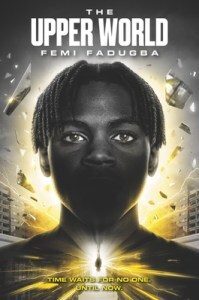 *The Upper World by Femi Fadugba
*The Upper World by Femi FadugbaPerfect for fans of Neal Shusterman and Jason Reynolds, this powerhouse, mind-bending YA debut follows two teens, a generation apart, whose fates collide across time–and outside of it.
Today
During arguably the worst week of Esso’s life, an accident knocks him into an incredible world–a place beyond space or time, where he can see glimpses of the past and future. But if what he sees there is true, he might not have much longer to live, unless he can use his new gift to change the course of history.
Tomorrow
Rhia’s past is filled with questions, none of which she expects a new physics tutor to answer. But Dr. Esso’s not here to help Rhia. He’s here because he needs her help–to unravel a tragedy that happened fifteen years ago. One that holds the key not only to Rhia’s past, but to a future worth fighting for.
 You’ve Reached Sam by Dustin Thao
You’ve Reached Sam by Dustin ThaoSeventeen-year-old Julie has her future all planned out—move out of her small town with her boyfriend Sam, attend college in the city, spend a summer in Japan. But then Sam dies. And everything changes.
Heartbroken, Julie skips his funeral, throws out his things, and tries everything to forget him and the tragic way he died. But a message Sam left behind in her yearbook forces back memories. Desperate to hear his voice one more time, Julie calls Sam’s cellphone just to listen to his voicemail.
And Sam picks up the phone.
In a miraculous turn of events, Julie’s been given a second chance at goodbye. The connection is temporary. But hearing Sam’s voice makes her fall for him all over again, and with each call it becomes harder to let him go. However, keeping her otherworldly calls with Sam a secret isn’t easy, especially when Julie witnesses the suffering Sam’s family is going through. Unable to stand by the sidelines and watch their shared loved ones in pain, Julie is torn between spilling the truth about her calls with Sam and risking their connection and losing him forever.
December 9, 2021
This Week at Book Riot
Over on Book Riot this week…
100+ YA books hitting shelves in paperback this winter.
Reading Rainbow is coming back to television with an interactive component.
All sorts of rad pink bookish gifts.
It’s beyond time to update your bookish t-shirt collection.
A look at all of last week’s censorship and book challenge news.

